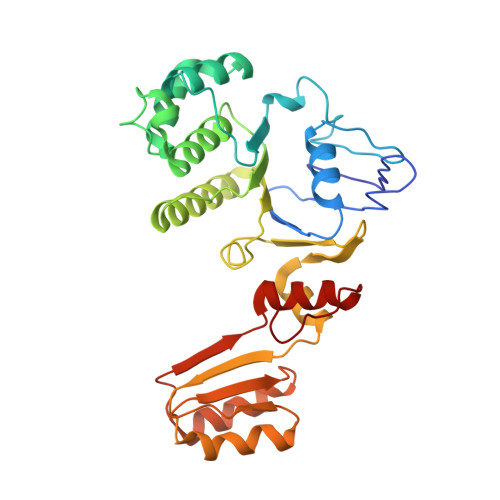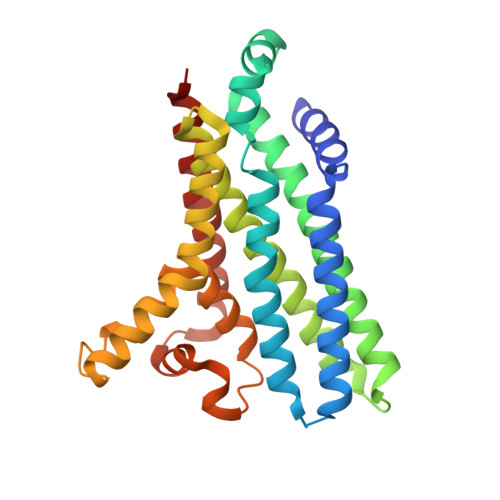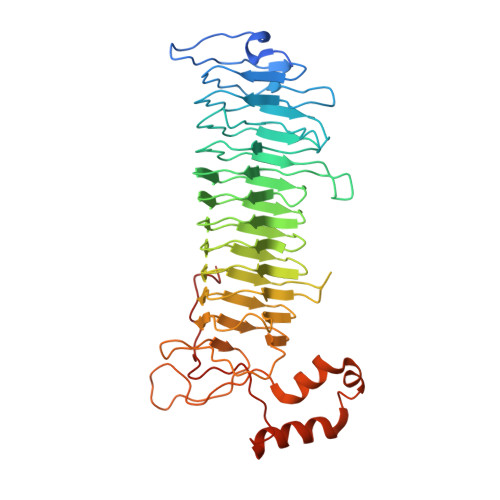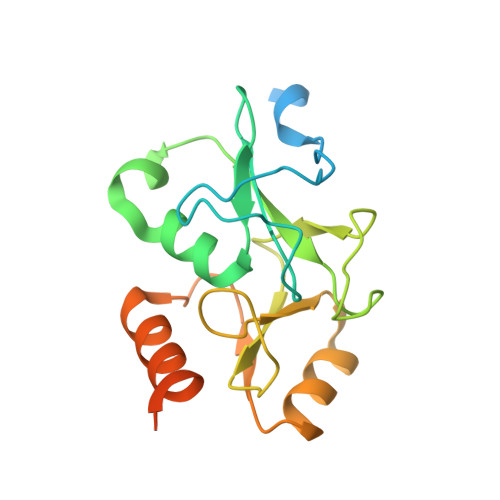Molecular interplay of an assembly machinery for nitrous oxide reductase.
Muller, C., Zhang, L., Zipfel, S., Topitsch, A., Lutz, M., Eckert, J., Prasser, B., Chami, M., Lu, W., Du, J., Einsle, O.(2022) Nature 608: 626-631
- PubMed: 35896743
- DOI: https://doi.org/10.1038/s41586-022-05015-2
- Primary Citation of Related Structures:
7O0Y, 7O0Z, 7O10, 7O11, 7O12, 7O13, 7O14, 7O15, 7O16, 7O17, 7OSF, 7OSG, 7OSH, 7OSI, 7OSJ, 7QBA, 7ZNQ - PubMed Abstract:
Emissions of the critical ozone-depleting and greenhouse gas nitrous oxide (N 2 O) from soils and industrial processes have increased considerably over the last decades 1-3 . As the final step of bacterial denitrification, N 2 O is reduced to chemically inert N 2 (refs. 1,4 ) in a reaction that is catalysed by the copper-dependent nitrous oxide reductase (N 2 OR) (ref. 5 ). The assembly of its unique [4Cu:2S] active site cluster Cu Z requires both the ATP-binding-cassette (ABC) complex NosDFY and the membrane-anchored copper chaperone NosL (refs. 4,6 ). Here we report cryo-electron microscopy structures of Pseudomonas stutzeri NosDFY and its complexes with NosL and N 2 OR, respectively. We find that the periplasmic NosD protein contains a binding site for a Cu + ion and interacts specifically with NosL in its nucleotide-free state, whereas its binding to N 2 OR requires a conformational change that is triggered by ATP binding. Mutually exclusive structures of NosDFY in complex with NosL and with N 2 OR reveal a sequential metal-trafficking and assembly pathway for a highly complex copper site. Within this pathway, NosDFY acts as a mechanical energy transducer rather than as a transporter. It links ATP hydrolysis in the cytoplasm to a conformational transition of the NosD subunit in the periplasm, which is required for NosDFY to switch its interaction partner so that copper ions are handed over from the chaperone NosL to the enzyme N 2 OR.
Organizational Affiliation:
Institut für Biochemie, Albert-Ludwigs-Universität Freiburg, Freiburg, Germany.




















